Definition Of Computer
- Computer is an electronic device that receives input, stores or processes the input as per user instructions and provides output in desired format.
- A computer is an electronic device that manipulates information, or data. It has the ability to store, retrieve, and process data.
- Input Unit.
- Output Unit.
- Memory Unit.
- Control Unit.
- Arithmetical and Logical Unit.
Input-Process-Output Model
Input- Process- Output - Model
Computer input is called data and the output obtained after processing it, based on user’s instructions is called information. Raw facts and figures which can be processed using arithmetic and logical operations to obtain information are called data.

The processes that can be applied to data are of two types −
Arithmetic operations − Examples include calculations like addition, subtraction, differentials, square root, etc.
- Logical operations − Examples include comparison operations like greater than, less than, equal to, opposite, etc.
The corresponding figure for an actual computer looks something like this −
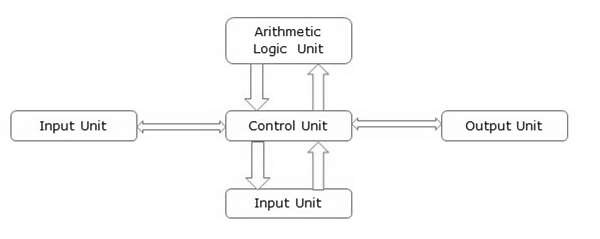
The basic parts of a computer are as follows −
Input Unit − Devices like keyboard and mouse that are used to input data and instructions to the computer are called input unit.
Output Unit − Devices like printer and visual display unit that are used to provide information to the user in desired format are called output unit.
Control Unit − As the name suggests, this unit controls all the functions of the computer. All devices or parts of computer interact through the control unit.
Arithmetic Logic Unit − This is the brain of the computer where all arithmetic operations and logical operations take place.
Memory − All input data, instructions and data interim to the processes are stored in the memory. Memory is of two types – primary memory and secondary memory. Primary memory resides within the CPU whereas secondary memory is external to it.
Control unit, arithmetic logic unit and memory are together called the central processing unit or CPU. Computer devices like keyboard, mouse, printer, etc. that we can see and touch are the hardware components of a computer. The set of instructions or programs that make the computer function using these hardware parts are called software. We cannot see or touch software. Both hardware and software are necessary for working of a computer.
Characteristics of Computer
To understand why computers are such an important part of our lives, let us look at some of its characteristics −
Speed − Typically, a computer can carry out 3-4 million instructions per second.
Accuracy − Computers exhibit a very high degree of accuracy. Errors that may occur are usually due to inaccurate data, wrong instructions or bug in chips – all human errors.
Reliability − Computers can carry out same type of work repeatedly without throwing up errors due to tiredness or boredom, which are very common among humans.
Versatility − Computers can carry out a wide range of work from data entry and ticket booking to complex mathematical calculations and continuous astronomical observations. If you can input the necessary data with correct instructions, computer will do the processing.
Storage Capacity − Computers can store a very large amount of data at a fraction of cost of traditional storage of files. Also, data is safe from normal wear and tear associated with paper.
Advantages of Using Computer
Now that we know the characteristics of computers, we can see the advantages that computers offer−
Computers can do the same task repetitively with same accuracy.
Computers do not get tired or bored.
Computers can take up routine tasks while releasing human resource for more intelligent functions.
Disadvantages of Using Computer
Despite so many advantages, computers have some disadvantages of their own −
Computers have no intelligence; they follow the instructions blindly without considering the outcome.
Regular electric supply is necessary to make computers work, which could prove difficult everywhere especially in developing nations.
Basics of Computers Classifications in English
Computers are now classified on the basis of their use or size.
- Desktop
- Laptop
- Tablet
- Server
- Mainframe
- Supercomputer
Desktop
Desktop computers are personal computers (PCs) designed for use by an individual at a fixed location. IBM was the first computer to introduce and popularize use of desktops. A desktop unit typically has a CPU (Central Processing Unit), monitor, keyboard and mouse. Introduction of desktops popularized use of computers among common people as it was compact and affordable.

Riding on the wave of desktop’s popularity many software and hardware devices were developed specially for the home or office user. The foremost design consideration here was user friendliness.
Laptop
Despite its huge popularity, desktops gave way to a more compact and portable personal computer called laptop in 2000s. Laptops are also called notebook computers or simply notebooks. Laptops run using batteries and connect to networks using Wi-Fi (Wireless Fidelity) chips. They also have chips for energy efficiency so that they can conserve power whenever possible and have a longer life.

Modern laptops have enough processing power and storage capacity to be used for all office work, website designing, software development and even audio/video editing.
Tablet
After laptops computers were further miniaturized to develop machines that have processing power of a desktop but are small enough to be held in one’s palm. Tablets have touch sensitive screen of typically 5 to 10 inches where one finger is used to touch icons and invoke applications.

Keyboard is also displayed virtually whenever required and used with touch strokes. Applications that run on tablets are called apps. They use operating systems by Microsoft (Windows 8 and later versions) or Google (Android). Apple computers have developed their own tablet called iPad which uses a proprietary OS called iOS.
Server
Servers are computers with high processing speeds that provide one or more services to other systems on the network. They may or may not have screens attached to them. A group of computers or digital devices connected together to share resources is called a network.

Servers have high processing powers and can handle multiple requests simultaneously. Most commonly found servers on networks include −
- File or storage server
- Game server
- Application server
- Database server
- Mail server
- Print server
Mainframe
Mainframes are computers used by organizations like banks, airlines and railways to handle millions and trillions of online transactions per second. Important features of mainframes are −
- Big in size
- Hundreds times Faster than servers, typically hundred megabytes per second
- Very expensive
- Use proprietary OS provided by the manufacturers
- In-built hardware, software and firmware security features
Supercomputer
Supercomputers are the fastest computers on Earth. They are used for carrying out complex, fast and time intensive calculations for scientific and engineering applications. Supercomputer speed or performance is measured in teraflops, i.e. 1012 floating point operations per second.
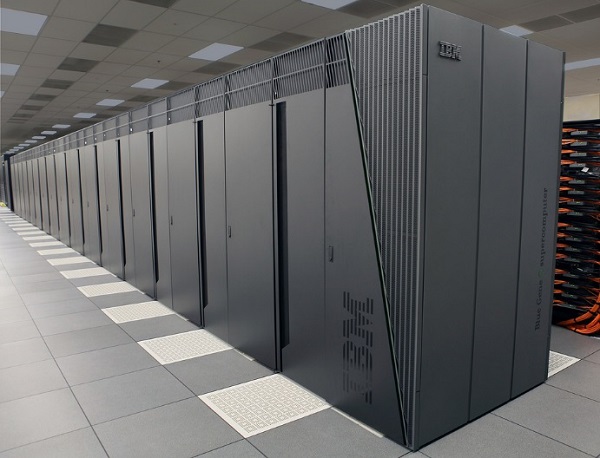
Chinese supercomputer Sun way Taihu Light is the world’s fastest supercomputer with a rating of 93 peta flops per second, i.e. 93 quadrillion floating point operations per second.
Most common uses of supercomputers include −
- Molecular mapping and research
- Weather forecasting
- Environmental research
- Oil and gas exploration
Basics of Computers : Ports & Connections
Types of Port and Connection Images
What is Port? पोर्ट्स किसे कहते हैं |
- A port is a channel through which data is transferred between input/output devices and the processor.
- पोर्ट एक प्रकार का चैनल हैं जिसके माध्यम से डाटा को इनपुट/आउटपुट और प्रोसेसर के बीच में ट्रान्सफर किया जाता हैं |
Types of Port & Connection with Images
1. USB ( यूनिवर्सल सीरियल बस ) :-
- You use this to connect peripheral devices such as a mouse, a modem, a keyboard, or a printer to a computer.
- इस पोर्ट का प्रयोग पेरिफेरल डिवाइस जैसे :- माउस, मॉडेम, कीबोर्ड और प्रिंटर को कंप्यूटर के साथ कनेक्ट करने के लिए किया जाता हैं |
- You use this to connect devices such as a digital camera. It is faster than a USB.
- इस पोर्ट का प्रयोग डिजिटल कैमरे को कनेक्ट करने के लिए किया जाता हैं | यह USB से ज्यादा फास्टर होता हैं |
3. Network Port (नेटवर्क पोर्ट ) :-
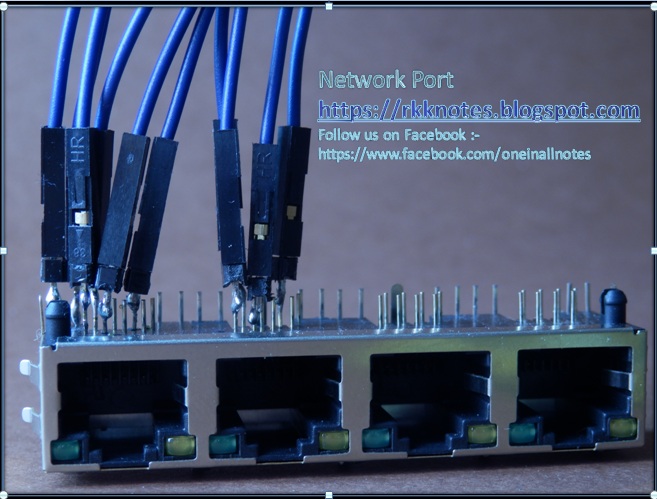 |
| Network Port and Connection Image |
- You use this to connect a computer to other computers to exchange information between the computers.
- इस पोर्ट का प्रयोग एक कंप्यूटर को दुसरे कंप्यूटरस से कनेक्ट करने के लिए किया जाता हैं ताकि कंप्यूटरस के बीच मे इनफार्मेशन शेयर कर सके |
4. Parallel and Serial Port (पैरेलल पोर्ट और सीरियल पोर्ट ):-
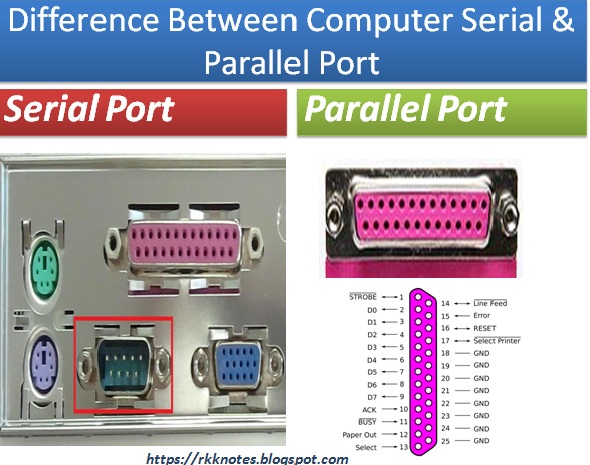 |
| Serial and Parallel Port and Connection Image |
- You use these ports to connect printers and other devices to a personal computer.
- इस पोर्ट का प्रयोग प्रिंटर और डिवाइस को पर्सनल कंप्यूटर के साथ कनेक्ट करने के लिए किया जाता हैं |
5. Display Adapter (डिस्प्ले एडाप्टर ):-
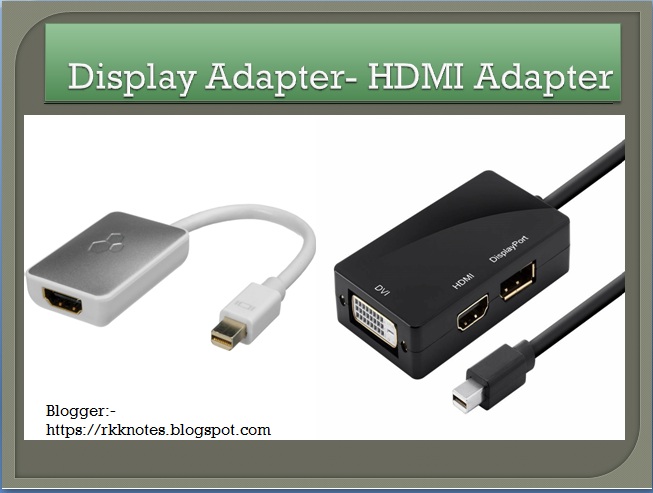 |
| Display Adapter Port and Connection Image |
- You connect a monitor to a display adapter on your computer.
- The display adapter generates the video signal received from a computer, and sends it to a monitor through a cable.
- The display adapter may be on the motherboard, or on an expansion card.
- इस पोर्ट की मदद से हम एक मॉनिटर को अपने कंप्यूटर पर एक डिस्प्ले एडाप्टर से कनेक्ट कर सकते हैं |
- डिस्प्ले एडाप्टर कंप्यूटर से प्राप्त विडियो सिग्नल को उत्पन्न करता हैं, और एक मॉनिटर को एक केबल के माध्यम से भेजता है |
- डिस्प्ले एडाप्टर या तो मदर बोर्ड पर हो सकता हैं या फिर एक्सपेंशन कार्ड पर हो सकता हैं |
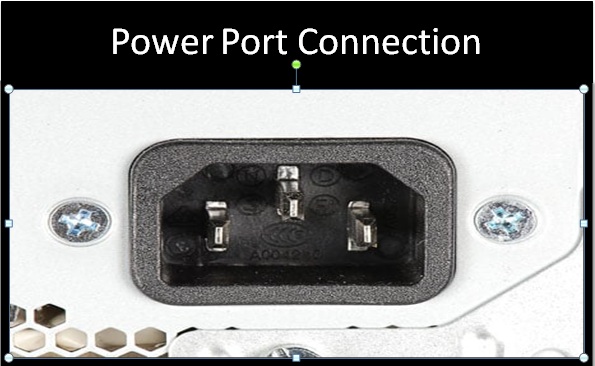 |
| Power Port and Connection Image |
- A motherboard and other components inside a computer use direct current.
- कंप्यूटर में मोजूद मदर बोर्ड और दुसरे component डायरेक्ट करंट का प्रयोग करते हैं |
- पॉवर पोर्ट के माध्यम से alternating current को direct current में बदला जाता हैं |
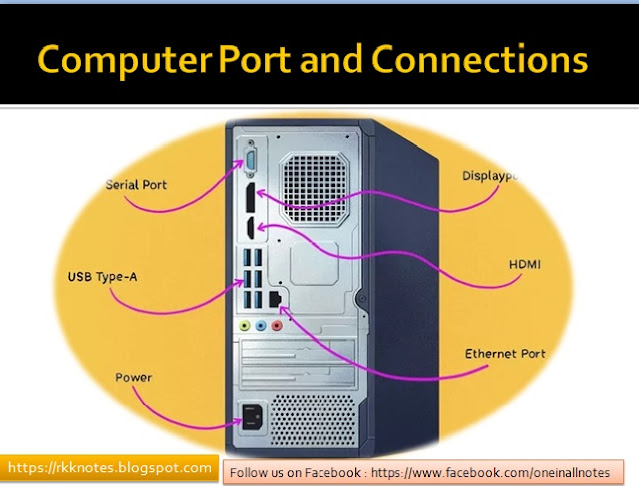
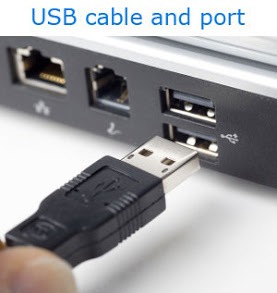
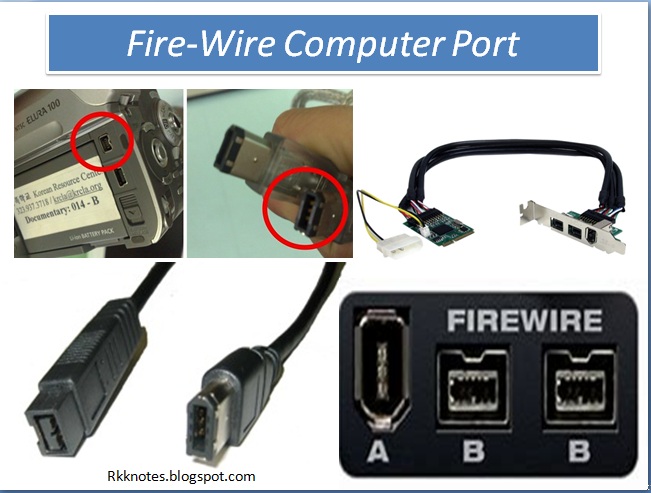
0 Comments